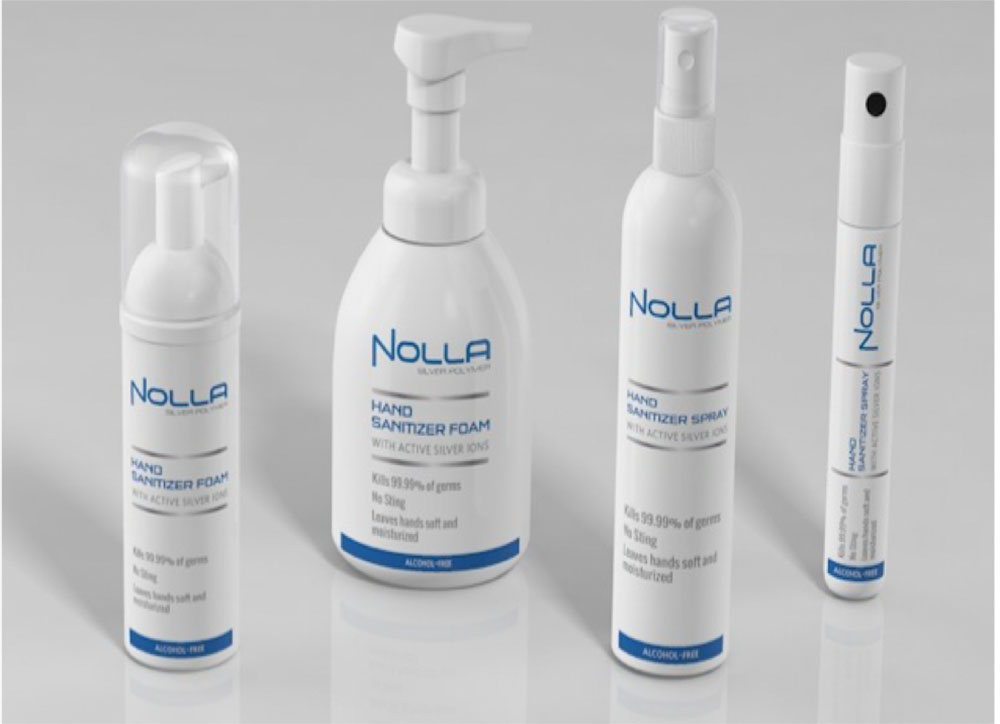A Finnish company has developed an antimicrobial technology designed to eradicate highly resistant and dangerous pathogens, including the top five on the World Health Organization’s list of dangerous bacteria.
The new Nolla technology is also applicable for fiber coating, explained Jyri Nieminen, chief executive officer of Nolla Antimicrobial.
The technology is based on ionic silver, which is the most potent antimicrobial form of silver. An intelligent polymer carrier is used to preserve and deliver the silver ions.
According to the company, Nolla technology is a unique concept among antimicrobials, which allows maximizes the antimicrobial efficiency and minimizes the amount required of active substance – silver chloride – for safe and effective use.
Antimicrobial performance in vitro
Nolla has recently been tested against a resistant Escherichia coli ATCC BAA-2469 strain, which is known to be resistant against 36 widely used antimicrobials, including carbepenems, β-lactams, cephalosporins, quinolones, tetracyclines, glycylcyclines, aminoglycosides and dihydrofolate reductase inhibitors.
Results showed that Nolla technology is bactericidal with just 1.5 ppm of ionic silver (corresponding to 0.02% of Nolla polymer) against this multi-drug resistant (MDR) strain of E. coli, while the minimum inhibitory concentration (MIC) performance was achieved with only 0.75 ppm of silver. Water was used as a solvent in the measurements that were carried out by Microchem Laboratory.
Nolla has more than 99.99% efficiency against methicillin-resistant Staphylococcus aureus (MRSA) within 60 seconds and just 150 ppm of silver content. This outstanding efficiency can be adjusted by changing the amount of silver, in addition to the flexibility in the choice of application-specific solvent.

Multiple mechanisms of action
Nolla’s active substance, silver chloride, has multiple action mechanisms, which include cell wall disruption, and interference of cell organelles and metabolism, leading to the death of the cell. Further, the utilized polymer carrier boosts the action of silver by interacting with the cell wall of bacteria. Therefore, the effectiveness and sustainability of Nolla technology is based on synergy and multivalence.
Many fiber applications are challenging in terms of skin compatibility owing to frequent contact between fibers and skin.
Nolla has been tested for possible skin sensitization potential using the industry-standard protocol Human Repeated Insult Patch Test (HRIPT). It was tested at a silver ion concentration of 300 pm, with no adverse skin reactions noticed by the dermatologist on any of the subjects.
Nolla was thereby proven to be hypoallergenic in long-term use in clinical trials with at least 300 ppm of silver content, which makes it the only hypoallergenic biocide technology currently available for hand sanitizers.
Accordingly, Nolla can be considered non-sensitizing, hypoallergenic and/or formulated to minimize the risks of allergy under normal usage, while surfaces and textiles treated with Nolla antimicrobial are non-toxic, non-sensitizing and non-irritating to human skin.
Fiber applications
Microbes such as bacteria or mold can shorten the useful lifetime of fiber products and textiles.
Nolla effectively kills bacteria that cause decay, unpleasant odors and discoloration of fibers. It is attached to the surface of a fiber by various physical and chemical bonds.
Nolla is rich in amine groups that have excellent adhesive properties to cellulosic fibers, such as cotton and viscose. In addition varying types of polyesters and polyamides perform well as a substrate material.
Hospital textiles are a critical group of fiber materials, where antimicrobial performance can be the decisive factor between life and death as bacteria are prone to inhabit the textiles of an infected or colonized patient.
Cross-contamination is another concern with hospital textiles. To overcome this problem, antimicrobial performance is required, regardless of continuous and effective cleaning of the textiles.
Nolla provides an easy and effective way of continuous antimicrobial coating. Preliminary results suggest that once coated, textiles can be washed around 50 times with more than 90% remaining efficacy against MRSA.
The coating setup is straightforward and can be tuned for significantly higher efficacies with more frequent coating and/or improved formulations, the company states.
Wounds provide ample opportunities for bacteria to infest and migrate into the body. Bandages and plasters are distinctive fiber-based applications where antimicrobial performance is of paramount importance.
Antimicrobial fiber coatings are crucial for the prevention of post-wound infections, as well as for a speedy recovery. Nolla has been tested by the US Air Force Research Laboratory in a bandage test, where a sponge glaze was impregnated with Nolla. The results showed pronounced efficacy of bandages through the reduction of bacterial growth.
Other fiber-based applications with antimicrobial performance include footwear, filters and various nonwoven textiles. Nolla offers more durable performance as a result of the polymeric nature of the technology compared with other biocides, and also more effective odor control, which is especially important for items that cannot be washed in standard washing machines.

sanitizers, ranging from healthcare environment and sports related changing rooms to working life environment.
Other areas of application
Owing to the flexibility and hypoallergenicity of Nolla technology, other fields of application include hand sanitizers and surface sanitizers, ranging from healthcare environments and sports-related changing rooms to work environments.


